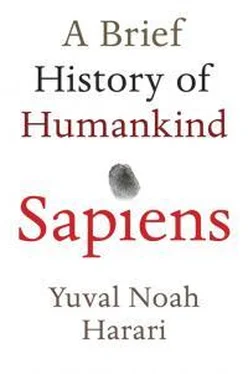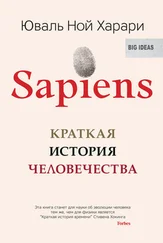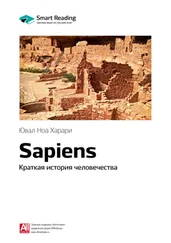The global empire being forged before our eyes is not governed by any particular state or ethnic group. Much like the Late Roman Empire, it is ruled by a multi-ethnic elite, and is held together by a common culture and common interests. Throughout the world, more and more entrepreneurs, engineers, experts, scholars, lawyers and managers are called to join the empire. They must ponder whether to answer the imperial call or to remain loyal to their state and their people. More and more choose the empire.
IN THE MEDIEVAL MARKET IN SAMARKAND, a city built on a Central Asian oasis, Syrian merchants ran their hands over fine Chinese silks, fierce tribesmen from the steppes displayed the latest batch of straw-haired slaves from the far west, and shopkeepers pocketed shiny gold coins imprinted with exotic scripts and the profiles of unfamiliar kings. Here, at one of that era’s major crossroads between east and west, north and south, the unification of humankind was an everyday fact. The same process could be observed at work when Kublai Khan’s army mustered to invade Japan in 1281. Mongol cavalrymen in skins and furs rubbed shoulders with Chinese foot soldiers in bamboo hats, drunken Korean auxiliaries picked fights with tattooed sailors from the South China Sea, engineers from Central Asia listened with dropping jaws to the tall tales of European adventurers, and all obeyed the command of a single emperor.
Meanwhile, around the holy Ka’aba in Mecca, human unification was proceeding by other means. Had you been a pilgrim to Mecca, circling Islam’s holiest shrine in the year 1300, you might have found yourself in the company of a party from Mesopotamia, their robes floating in the wind, their eyes blazing with ecstasy, and their mouths repeating one after the other the ninety-nine names of God. Just ahead you might have seen a weather-beaten Turkish patriarch from the Asian steppes, hobbling on a stick and stroking his beard thoughtfully. To one side, gold jewellery shining against jet-black skin, might have been a group of Muslims from the African kingdom of Mali. The aroma of clove, turmeric, cardamom and sea salt would have signalled the presence of brothers from India, or perhaps from the mysterious spice islands further east.
Today religion is often considered a source of discrimination, disagreement and disunion. Yet, in fact, religion has been the third great unifier of humankind, alongside money and empires. Since all social orders and hierarchies are imagined, they are all fragile, and the larger the society, the more fragile it is. The crucial historical role of religion has been to give superhuman legitimacy to these fragile structures. Religions assert that our laws are not the result of human caprice, but are ordained by an absolute and supreme authority. This helps place at least some fundamental laws beyond challenge, thereby ensuring social stability.
Religion can thus be defined as a system of human norms and values that is founded on a belief in a superhuman order . This involves two distinct criteria:
1. Religions hold that there is a superhuman order, which is not the product of human whims or agreements. Professional football is not a religion, because despite its many laws, rites and often bizarre rituals, everyone knows that human beings invented football themselves, and FIFA may at any moment enlarge the size of the goal or cancel the offside rule.
2. Based on this superhuman order, religion establishes norms and values that it considers binding. Many Westerners today believe in ghosts, fairies and reincarnation, but these beliefs are not a source of moral and behavioural standards. As such, they do not constitute a religion.
Despite their ability to legitimise widespread social and political orders, not all religions have actuated this potential. In order to unite under its aegis a large expanse of territory inhabited by disparate groups of human beings, a religion must possess two further qualities. First, it must espouse a universal superhuman order that is true always and everywhere. Second, it must insist on spreading this belief to everyone. In other words, it must be universal and missionary.
The best-known religions of history, such as Islam and Buddhism, are universal and missionary. Consequently people tend to believe that all religions are like them. In fact, the majority of ancient religions were local and exclusive. Their followers believed in local deities and spirits, and had no interest in converting the entire human race. As far as we know, universal and missionary religions began to appear only in the first millennium BC. Their emergence was one of the most important revolutions in history, and made a vital contribution to the unification of humankind, much like the emergence of universal empires and universal money.
Silencing the Lambs
When animism was the dominant belief system, human norms and values had to take into consideration the outlook and interests of a multitude of other beings, such as animals, plants, fairies and ghosts. For example, a forager band in the Ganges Valley may have established a rule forbidding people to cut down a particularly large fig tree, lest the fig-tree spirit become angry and take revenge. Another forager band living in the Indus Valley may have forbidden people from hunting white-tailed foxes, because a white-tailed fox once revealed to a wise old woman where the band might find precious obsidian.
Such religions tended to be very local in outlook, and to emphasise the unique features of specific locations, climates and phenomena. Most foragers spent their entire lives within an area of no more than a thousand square kilometres. In order to survive, the inhabitants of a particular valley needed to understand the super-human order that regulated their valley, and to adjust their behaviour accordingly. It was pointless to try to convince the inhabitants of some distant valley to follow the same rules. The people of the Indus did not bother to send missionaries to the Ganges to convince locals not to hunt white-tailed foxes.
The Agricultural Revolution seems to have been accompanied by a religious revolution. Hunter-gatherers picked and pursued wild plants and animals, which could be seen as equal in status to Homo sapiens . The fact that man hunted sheep did not make sheep inferior to man, just as the fact that tigers hunted man did not make man inferior to tigers. Beings communicated with one another directly and negotiated the rules governing their shared habitat. In contrast, farmers owned and manipulated plants and animals, and could hardly degrade themselves by negotiating with their possessions. Hence the first religious effect of the Agricultural Revolution was to turn plants and animals from equal members of a spiritual round table into property.
This, however, created a big problem. Farmers may have desired absolute control of their sheep, but they knew perfectly well that their control was limited. They could lock the sheep in pens, castrate rams and selectively breed ewes, yet they could not ensure that the ewes conceived and gave birth to healthy lambs, nor could they prevent the eruption of deadly epidemics. How then to safeguard the fecundity of the flocks?
A leading theory about the origin of the gods argues that gods gained importance because they offered a solution to this problem. Gods such as the fertility goddess, the sky god and the god of medicine took centre stage when plants and animals lost their ability to speak, and the gods’ main role was to mediate between humans and the mute plants and animals. Much of ancient mythology is in fact a legal contract in which humans promise everlasting devotion to the gods in exchange for mastery over plants and animals – the first chapters of the book of Genesis are a prime example. For thousands of years after the Agricultural Revolution, religious liturgy consisted mainly of humans sacrificing lambs, wine and cakes to divine powers, who in exchange promised abundant harvests and fecund flocks.
Читать дальше



![Юваль Ной Харари - Sapiens. Краткая история человечества [litres]](/books/34310/yuval-noj-harari-sapiens-kratkaya-istoriya-cheloveche-thumb.webp)





![Юваль Ной Харари - 21 урок для XXI века [Версия с комментированными отличиями перевода]](/books/412481/yuval-noj-harari-21-urok-dlya-xxi-veka-versiya-s-ko-thumb.webp)


